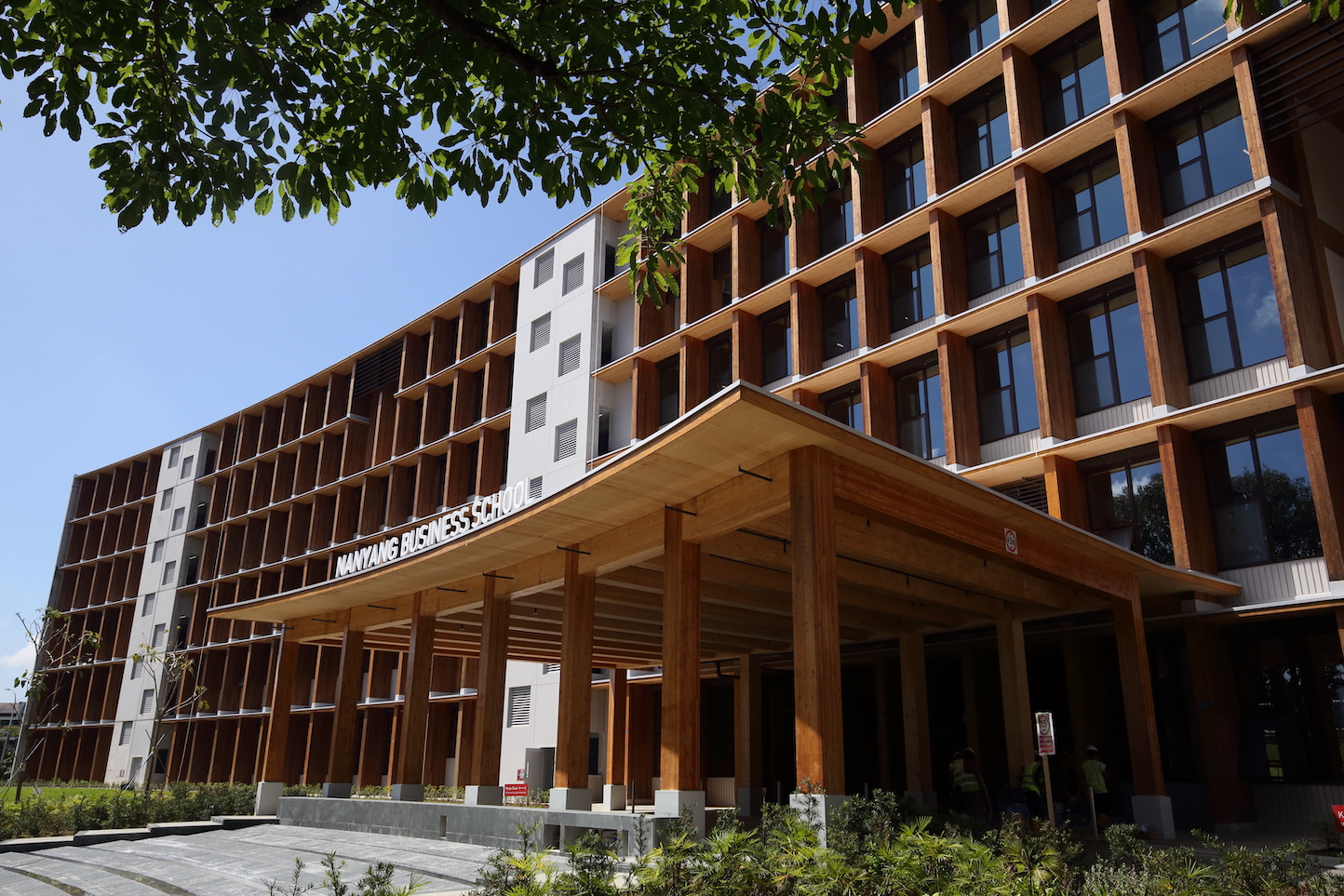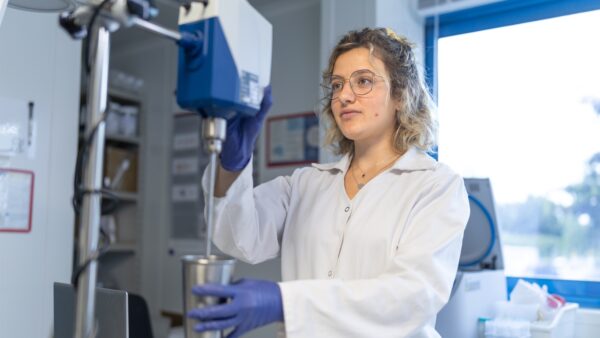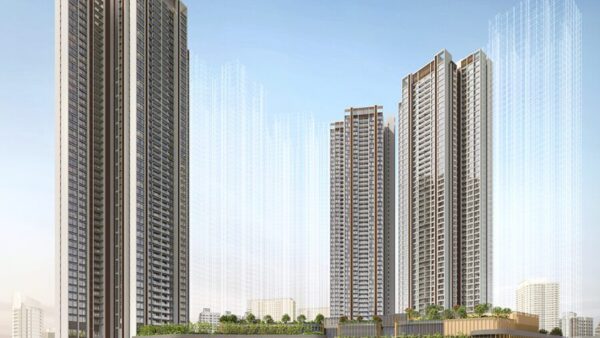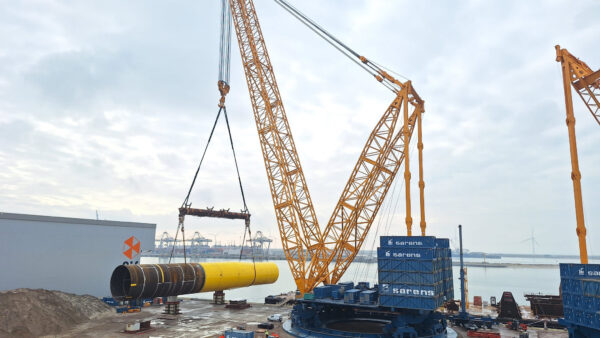
Mould is growing on the walls of Asia’s largest timber building – the six-storey Gaia building at Singapore’s Nanyang Technological University (NTU) – raising questions about the use of imported timber in damp, tropical climates.
Housing the university’s business school, the 43,500-sq-m building was completed in May last year using more than 7,600 cubic metres of cross-laminated timber (CLT) elements made in Europe from Austrian spruce by wood supplier Stora Enso.
It contains a 170-seat auditorium, 12 lecture theatres, 13 seminar rooms, and 25 classrooms.
Singaporean news site Mothership visited the building and reported that the mould was most apparent on the top three storeys.
A Bloomberg article republished by Singapore’s Business Times described the mould as white flecks that resemble dust.
The mould was unlikely to affect the building’s structural integrity, the university’s chief architect told Bloomberg in a joint statement with Loh Kee Soon, lead architect for Gaia at RSP Architects Planners & Engineers, the Singaporean firm who designed the building with Toyo Ito & Associates.
“We have a comprehensive mould treatment and building preservation programme in place and employees and students may report any mould observed,” they said.
“Similar to all other NTU buildings, we continue to walk the ground, inspect and maintain the building on an ongoing basis.”
‘A little grossed out’
Students and staff using the building told Bloomberg the mould made them uncomfortable.
“It makes me feel a little grossed out,” said a fourth-year student.
A staff member told Bloomberg he avoids his office over fears the mould will aggravate respiratory issues.
The university said it had developed a “comprehensive” maintenance plan for Gaia, including reapplying sealant on the timber, adjusting the air-conditioning, and asking staff to keep windows closed to reduce condensation.
Singapore now has around 20 buildings made with mass engineered timber, including NTU’s new sports hall, “The Wave”, completed in 2017 with a 72m-long, undulating timber roof.
But Bloomberg cast doubt on the material’s suitability, saying “what looks good on paper has gotten a reality check in tropical Singapore, where it rains about 180 days a year”.
It quotes Andrew Wong of the International Wood Culture Society as saying that spruce is more vulnerable to rot and mould than many other species.
That means it must be treated with the correct coatings, he said.
“It’s basically a climate problem,” he told Bloomberg. “We are in the tropics, and that requires special attention.”
Water everywhere
Last year, Stora Enso told GCR that it viewed the Gaia project as a “moisture management test case”.
It said it applied a hydrophobic coating to all elements before shipping.
But it noted that Singapore saw its heaviest rainfall in 40 years while Gaia was being assembled by Singapore’s Steeltech Industries.
Workers started each day by sweeping off or vacuuming pools of water from exposed horizontal surfaces, repeating the exercise following the afternoon showers, Stora Enso said.
They removed 3,300mm of rain this way, said the company.
Steeltech Industries also adapted its schedule by erecting the top three levels in one go to allow quicker waterproofing of more than 50 balconies, terraces, bridges, and skylights.
Exterior vertical fins were clad in naturally water-resistant larch for extra protection.
Shipping problems?
Coming to timber’s defence was Kevin Hill, a veteran of mass-timber building in Singapore and founder of contractor Venturer Timber.
He told the Wood Central news site that disruptions to global shipping during the covid pandemic were a possible factor.
Stora Enso told GCR that it packaged the elements in the correct assembly sequence and sent them to Singapore in 29 shipments over 639 days between September 2019 and June 2021.
It was the biggest delivery Stora Enso had ever made to a single site, it said, adding the operation was complicated by the pandemic and global supply chain disruptions, including blockages in the Suez Canal.
“Covid had a huge delay mid-project,” Hill said, adding that the elements were “likely sitting for many months undercover, exposed to high ambient moisture, which potentially locked in mould spores pre-coating”.
Hill pointed to other mass timber buildings in the city state that had “worked out really, really well” and advised people to take alarmism over timber in Singapore “with a pinch of salt”.
- Subscribe here to get stories about construction around the world in your inbox three times a week
Further reading:










